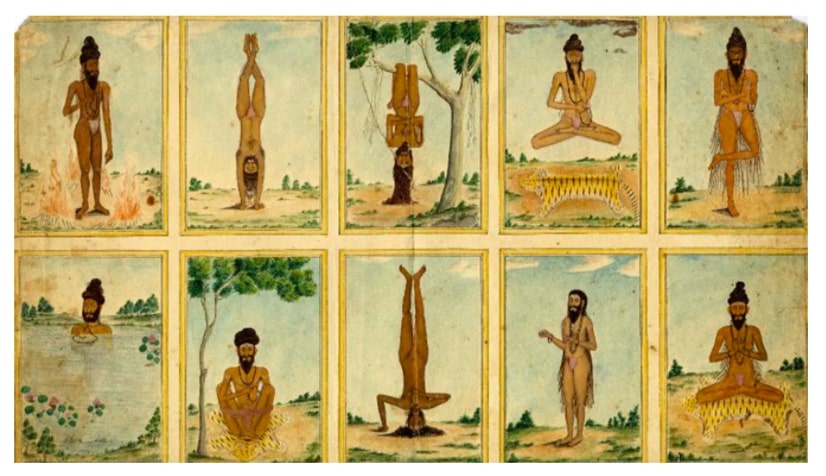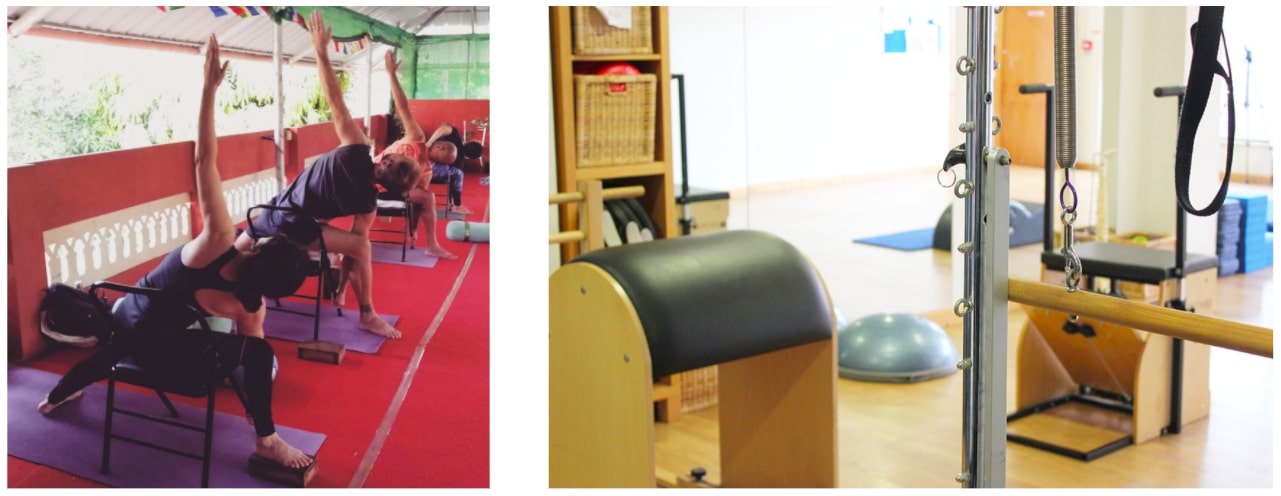If like me you’ve tried a bunch of different ways of keeping fit, you’ve probably noticed the similarities and crossovers between Yoga and Pilates. You may also have wondered what makes them different? In this article we will look at the key differences between Pilates and Yoga, and learn why this question comes up so often.
1. Origins
Let’s start with origins. Yoga can be traced back to ancient India, with references found in the Sanskrit text, The Vedas (1500-500BCE). Yoga encompasses physical, mental and spiritual practices which has evolved into the current form that people practice today. Pilates, on the other hand is a physical fitness system developed in the early 20th century by Joseph Pilates – who studied yoga and the movements of animals when creating his exercises (which explains the cross overs between Yoga and Pilates). The goal of Pilates from the outset was for the physical rehabilitation of war veterans.

2. Mind, body and spirit
The easiest difference to spot, is that Yoga involves a spiritual dimension. Many practitioners or yogis consider Yoga as a path of self-realisation, of gaining a sense of wholeness, unity with others, the wider community and the world.
3. Focus
Yoga classes focus on Asanas: physical postural practice, Pranayama: yogic breathing, meditation, and bringing both the body and mind into a state of relaxation. Pilates focuses on small movements that require the use of important stabilising muscles of the back and core. Although the breath is important, Pilates is more of a traditional exercise workout where relaxation is not the focus.
4. Equipment
Your body is the main prop in Yoga! Pilates and Yoga classes both use mats as this allow for a solid foundation on which to hold certain poses – working especially well for balancing poses.
Pilates classes can involve specific Pilates machines such as: the Reformer, the Cadillac, the Wunda Chair and the Ladder Barrel (Pic-C) The apparatuses used in Pilate classes are particularly helpful for rehabilitating injury, and aiding specialised physical conditions. The machines used in Pilates allows for a focus on one body part before moving on to the next.
Props in Yoga classes can be used in the same way( Pic-B), aiding practitioners to achieve better balance, and also to hold poses for a longer period of time. Many different types of yoga classes, and Iyengar yoga specifically which is extremely alignment oriented, uses props such as: blocks, straps and blankets. Props are also widely used in restorative yoga classes or for restorative poses allowing practitioners to fall into a deeper state of relaxation.
5. Yogic tradition and styles
Yoga styles range from gentle and relaxing to challenging and strenuous. There is most certainly a style of Yoga for everyone, from the traditional Hatha, and Ashtanga, to the more calming styles of Restorative and Yin yoga.
There are fewer variations in the way that Pilates is taught. Classes are taught with the use of mats or in a studio with special apparatus.

6. Progression
Have you ever seen a picture of a person in an ‘impossible’ yoga pose? I know I have. Well those seemingly impossible contortionist moves are possible! Yoga involves bending, twisting and contorting poses which after years of practice allows for greater flexibility and mobility. When practiced regularly your body may be able to balance for longer, stretch deeper, and build greater strength really making those moves possible. That being said, not all bodies are the same and it’s possible for beginners to comfortably do a more advanced Yoga pose.
Advancement in Pilates exercises involves gaining better core strength, and better control of movement. Progression in Pilates would allow for use of different equipment and exercises to increase strength and flexibility – with a little less contortion.
And the similarities…
Similar health benefits
Yoga and Pilates share many health benefits, as both practices can allow people to build an awareness of body, and breath. Continual practice of Tadasana (mountain pose), will improve balance and posture. Over time Yoga practice allows one to relearn simple movement patterns – how to position the feet when resting, or how to hold the shoulders when sitting. Practitioners can then strengthen the underlying muscular and structural systems of the body. Another appeal of both Pilates and Yoga is that practitioners can gain flexibility, strength, and an awareness of the body without adding extra weight.
So…
Yoga provides the tools for meditation and improvement for the physical body and life of the mind. It promotes stress relief, improves the overall quality of one’s body, breath, and mind which ultimately flows to others. Pilates practice develops bodily awareness, strengthening of one’s core which results in a stronger and more stable body.
It’s easy to see how Pilates and Yoga complement each other, as does Yoga and sports, Yoga and dance, Yoga and marathon training – the list goes on. So if you’re a Pilates practitioner wondering what’s the fuss with Yoga, why not give it a go and see for yourself?
And if you do practice both Yoga and Pilates, how do you integrate them into your weekly practice? It would be great to hear about your experiences in the comments section below.
Still not sure what I’m talking about, check out some of the poses from Hatha Yoga with props, and you might just see.
ABOUT THE AUTHOR

Neelam
– Yoga Teacher and Japanese language enthusiast
Leave a Reply